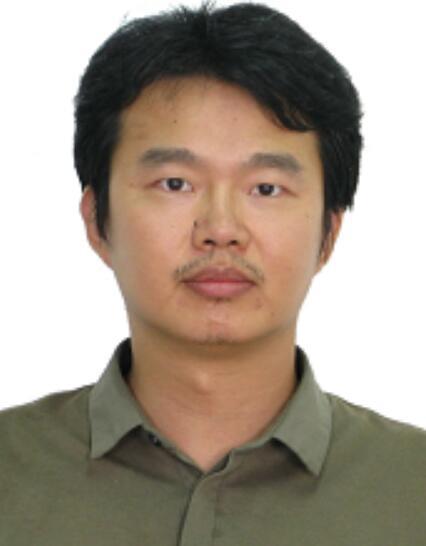續本達,男,博士,清華大學助理教授。
基本介紹
- 中文名:續本達
- 學位/學歷:博士
- 職業:教師
- 任職院校:清華大學
個人經歷,主講課程,研究方向,學術成果,
個人經歷
● 2011.10-2014.09 日本東北大學 理學部中微子研究中心 物理學博士
● 2009.10-2011.09 日本東北大學 理學部中微子研究中心 物理學碩士
● 2005.08-2009.07 清華大學 物理系 數學物理基科學學士
● 2018.08-現在 清華大學工程物理系 助理教授
● 2015.04-2018.08 東京大學數物連攜宇宙研究所 (IPMU) 特任研究員 (博士後)
● 2014.10-2015.02 日本東北大學 理學部中微子科學研究中心 教育研究支援者 (博士後)
● 2011年—現在 Gentoo Linux 開發者
● 2015年—現在 Debian OS 維護者
主講課程
● 講授《實驗物理的大數據方法(1)》、《實驗物理的大數據方法(2)》本科生課程;合教《基礎物理學(1)》、《基礎物理學(3)》、《高能物理導論》本科生課程;合教《高能物理實驗專題》研究生課程。
研究方向
● 作為一名實驗物理學者,續本達教授正在圍繞中國錦屏地下實驗室的中微子實驗開展研究工作。他同時參與 JUNO、SK、XMASS 等國際合作研究。這些實驗都(將)位於地下實驗室,地下環境為觀測中微子和暗物質提供了天然宇宙線禁止,是觀測弱信號的基本條件。這些微弱信號中蘊含著物理學的前沿,包括潛在的平時被忽略的新粒子和新型相互作用。
● 近一個世紀,人類對地球、太陽系、星系、宇宙起源的認識獲得了顛覆性的突破。中微子極小的質量、極小的反應截面和在宇宙中的普適存在,使它成為獨特的信使。利用中微子對太陽、超新星(該發現獲2002年諾貝爾獎)和地球進行觀測,給人類研究它們內部核反應過程提供了全新的手段。而暗物質主導了星系的起源和演化,決定著宇宙的大尺度結構,但是至今只被觀測到了引力效應。
另一方面,2012年Higgs粒子的最終發現(相關理論工作獲2013年諾貝爾獎),宣告標準模型作為描述萬物的自然法則經受了嚴格的實驗檢驗,最終完整地建立起來。這也使得探尋超越標準模型的新物理變得更加迫切。中微子振盪與質量的發現(獲2015年諾貝爾獎)是迄今唯一一個標準模型之外被證實的現象。圍繞中微子的Charge-Parity對稱檢驗、馬約拉納性以及輕子守恆檢驗、質量起源機制的研究都有望成為打開新物理大門的鑰匙。超對稱、鏡像粒子、軸子、重中微子等的任何暗物質假說粒子被發現,都會給我們帶來超出標準模型的新物理,為人類認知帶來革命。
● 在地下粒子物理的實驗研究中,續本達教授對大型液體探測器有著豐富經驗。探測器中,液體與粒子相互作用發光,光子信號由液體容器邊界上的光電倍增管等收集。光電倍增管是可以將單個光子轉換成巨觀電壓脈衝的真空電子管器件。在粒子探測的實驗技術中,續本達教授對新光子讀出和調整數據採集方法,現代統計學方法,大數據方法和高性能計算尤其感興趣。
學術成果
錦屏中微子實驗研究 清華大學人才引進項目 2018-08 ~ 2021-12 負責人
● Development of low radioactivity photomultiplier tubes for the XMASS-I detector,"Nuclear Instruments and Methods in Physics Research Section A: Accelerators, Spectrometers, Detectors and Associated Equipment",171-176,XMASS Collaboration,2019;
● Search for sub-GeV dark matter by annual modulation using XMASS-I detector,Physics Letters B,,XMASS Collaboration,2019;
● Search for WIMP-129Xe inelastic scattering with particle identification in XMASS-I,Astroparticle Physics,1-7,XMASS Collaboration,2019;
● A direct dark matter search in XMASS-I,Physics Letters B,45-53,XMASS Collaboration,2019;
● Identification of 210Pb and 210Po in the bulk of copper samples with a low-background alpha particle counter,"Nuclear Instruments and Methods in Physics Research Section A: Accelerators, Spectrometers, Detectors and Associated Equipment",157-161,XMASS Collaboration,2018;
● Improved search for two-neutrino double electron capture on 124Xe and 126Xe using particle identification in XMASS-I,Progress of Theoretical and Experimental Physics,053D03,XMASS Collaboration,2018;
● Direct dark matter search by annual modulation with 2.7 years of XMASS-I data,Physical Review D,102006,XMASS Collaboration,2018;
● Search for dark matter in the form of hidden photons and axion-like particles in the XMASS detector,Physics Letters B,153-158,XMASS Collaboration,2018;
● A measurement of the scintillation decay time constant of nuclear recoils in liquid xenon with the XMASS-I detector,Journal of Instrumentation,P12032,XMASS Collaboration,2018;
● A machine learning approach to track identification in emulsion cloud chambers,XXVIII International Conference on Neutrino Physics and Astrophysics,,"Xu, Benda",2018;
● Search for solar Kaluza-Klein axions by annual modulation with the XMASS-I detector,Progress of Theoretical and Experimental Physics,,XMASS Collaboration,2017;
● Portage: Bringing Hackers' Wisdom to Science,arXiv preprint arXiv:1610.02742,,"Amadio, Guilherme; Xu, Benda; ",2016;
● KamLAND sensitivity to neutrinos from pre-supernova stars,The Astrophysical Journal,91,KamLAND Collaboration,2016;
● Search for double-beta decay of 136 Xe to excited states of 136 Ba with the KamLAND-Zen experiment,Nuclear Physics A,171-181,KamLAND-Zen Collaboration,2016;
● "XMASS 1.5: The next step in Kamioka, Japan",Journal of Physics: Conference Series,42064,"Xu, Benda",2016;
● Direct dark matter search by annual modulation in XMASS-I,Physics Letters B,272-276,XMASS Collaboration,2016;
● Results from kamland-zen,AIP Conference Proceedings,170003,KamLAND-Zen Collaboration,2015;
● Be-7 solar neutrino measurement with KamLAND,Physical Review C,55808,KamLAND Collaboration,2015;
● A compact ultra-clean system for deploying radioactive sources inside the KamLAND detector,"Nuclear Instruments and Methods in Physics Research Section A: Accelerators, Spectrometers, Detectors and Associated Equipment",88-96,KamLAND Collaboration,2015;
● Study of electron anti-neutrinos associated with gamma-ray bursts using KamLAND,The Astrophysical Journal,87,KamLAND Collaboration,2015;
● Search for the proton decay mode p→ν¯K+ with KamLAND,Physical Review D,52006,KamLAND Collaboration,2015;
● Limit on Neutrinoless ββ Decay of Xe-136 from the First Phase of KamLAND-Zen and Comparison with the Positive Claim in Ge-76, Physical Review Letters,62502,KamLAND-Zen Collaboration,2013;
● Reactor on-off antineutrino measurement with KamLAND,Physical Review D,33001,KamLAND Collaboration,2013;
● CeLAND: search for a 4th light neutrino state with a 3 PBq 144Ce-144Pr electron antineutrino generator in KamLAND,arXiv preprint arXiv:1312.0896,,KamLAND Collaboration and others,2013;
● White paper: CeLAND-Investigation of the reactor antineutrino anomaly with an intense 144Ce-144Pr antineutrino source in KamLAND,arXiv preprint arXiv:1309.6805,,KamLAND Collaboration and others,2013;
● Measurement of the double-β decay half-life of 136 Xe with the KamLAND-Zen experiment,Physical Review C,45504,KamLAND-Zen Collaboration,2012;
● Limits on Majoron-emitting double-β decays of 136 Xe in the KamLAND-Zen experiment,Physical Review C,21601,KamLAND-Zen Collaboration,2012;
● Search for extraterrestrial antineutrino sources with the KamLAND detector,The Astrophysical Journal,193,KamLAND Collaboration,2012;
● Constraints on θ 13 from a three-flavor oscillation analysis of reactor antineutrinos at KamLAND,Physical Review D,52002,KamLAND Collaboration,2011;
● Measurement of the 8 B solar neutrino flux with the KamLAND liquid scintillator detector,Physical Review C,35804,KamLAND Collaboration,2011;
● Partial radiogenic heat model for Earth revealed by geoneutrino measurements,Nature Geoscience,647,KamLAND Collaboration,2011.

